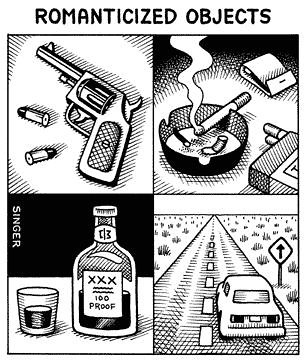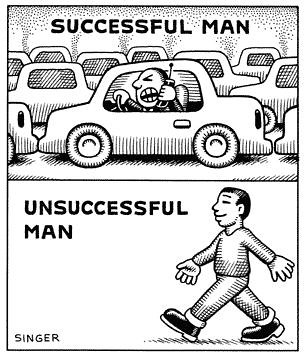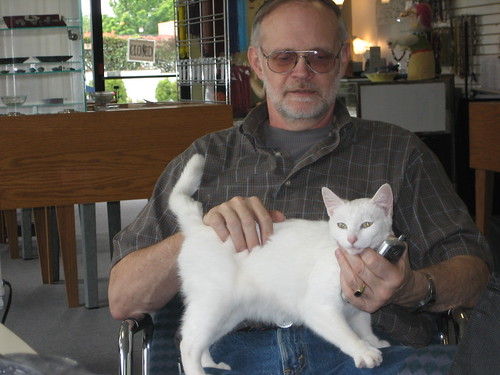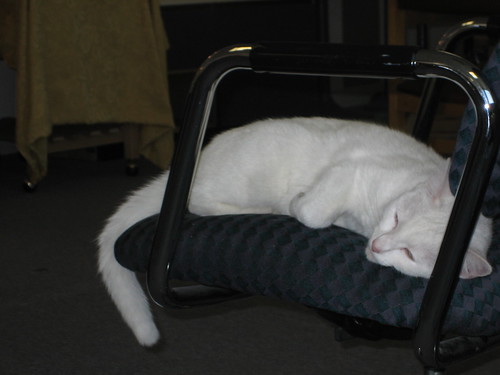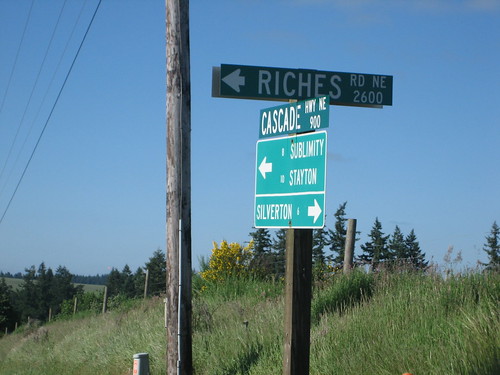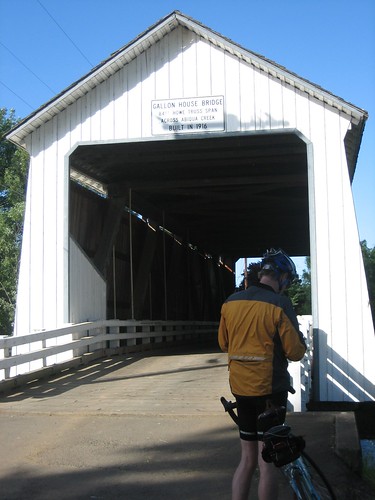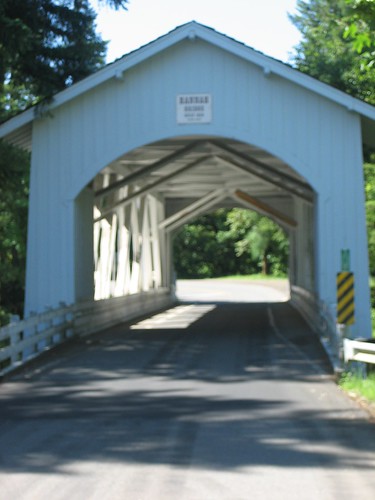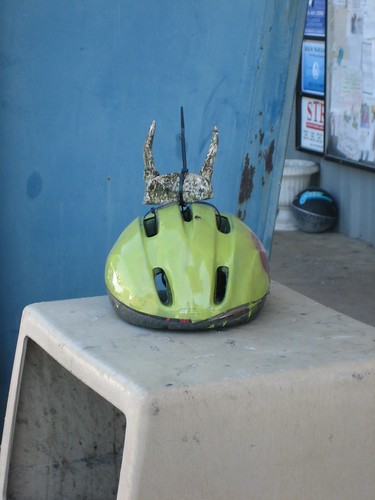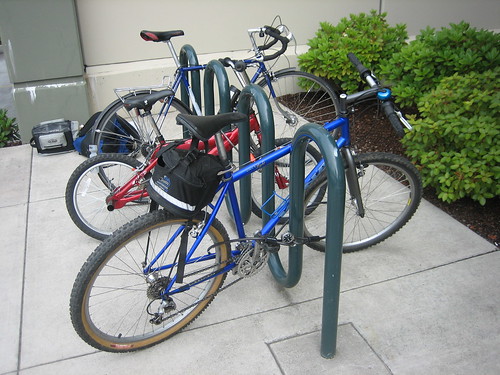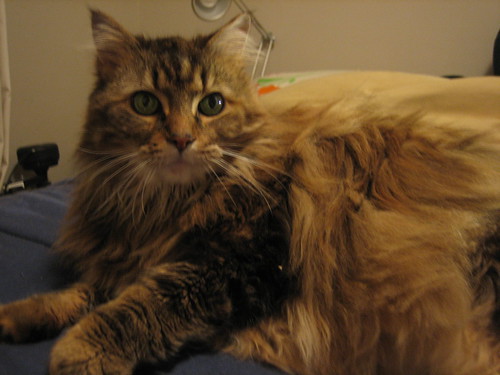70% of the public space in Los Angeles is dedicated to car mobility… 20% of public space in Paris is dedicated to car mobility. In which city would you rather live?”
I can't say it any better. Here's an article I lifted from the opposition to the Vancouver BC Gateway Project. This is pertinent because of own local stupidity, the Columbia River Crossing project. Enjoy.
An excerpt from Suburban Nation: The Rise of Sprawl and the Decline of the American Dream
by Andres Duany, Elizabeth Plater-Zyberk, and Jeff Speck
North Point Press, 2000, pp. 88-94.
There is a much deeper problem than the way highways are placed and managed. It is the question of why we are still building highways at all.
The simple truth is that building more highways and widening existing roads, almost always motivated by concern over traffic, does nothing to reduce traffic. In the long run, in fact, it increases traffic. This revelation is so counterintuitive that it bears repeating: adding lanes makes traffic worse. This paradox was suspected as early as 1942 by Robert Moses, who noticed that the highways he had built around New York City in 1939 were somehow generating greater traffic problems than had existed previously. Since then, the phenomenon has been well documented, most notably in 1989, when the Southern California Association of Governments concluded that traffic-assistance measures, be they adding lanes, or even double-decking the roadways, would have no more than a cosmetic effect on Los Angeles' traffic problems. The best it could offer was to tell people to work closer to home, which is precisely what highway building mitigates against.
Across the Atlantic, the British government reached a similar conclusion. Its studies showed that increased traffic capacity causes people to drive more--a lot more--such that half of any driving-time savings generated by new roadways are lost in the short run. In the long run, potentially all savings are expected to be lost. In the words of the Transport Minister, "The fact of the matter is that we cannot tackle our traffic problems by building more roads."2 While the British have responded to this discovery by drastically cutting their road-building budgets, no such thing can be said about Americans.
There is no shortage of hard data. A recent University of California at Berkeley study covering thirty California counties between 1973 and 1990 found that, for every 10 percent increase in roadway capacity, traffic increased 9 percent within four years' time.3 For anecdotal evidence, one need only look at commuting patterns in those cities with expensive new highway systems. USA Today published the following report on Atlanta: "For years, Atlanta tried to ward off traffic problems by building more miles of highways per capita than any other urban area except Kansas City…As a result of the area's sprawl, Atlantans now drive an average of 35 miles a day, more than residents of any other city."· This phenomenon, which is now well known to those members of the transportation industry who wish to acknowledge it, has come to be called induced traffic.
The mechanism at work behind induced traffic is elegantly explained by an aphorism gaining popularity among traffic engineers: "Trying to cure traffic congestion by adding more capacity is like trying to cure obesity by loosening your belt." Increased traffic capacity makes longer commutes less burdensome, and as a result, people are willing to live farther and farther from their workplace. As increasing numbers of people make similar decisions, the long-distance commute grows as crowded as the inner city, commuters clamor for additional lanes, and the cycle repeats itself. This problem is compounded by the hierarchical organization of the new roadways, which concentrate through traffic on as few streets as possible.
The phenomenon of induced traffic works in reverse as well. When New York's West Side Highway collapsed in 1973, an NYDOT study showed that 93 percent of the car trips lost did not reappear elsewhere; people simply stopped driving. A similar result accompanied the destruction of San Francisco's Embarcadero Freeway in the 1989 earthquake. Citizens voted to remove the freeway entirely despite the apocalyptic warnings of traffic engineers. Surprisingly, a recent British study found that downtown road removals tend to boost local economies, while new roads lead to higher urban unemployment. So much for road-building as a way to spur the economy.·
If traffic is to be discussed responsibly, it must first be made clear that the level of traffic which drivers experience daily, and which they bemoan so vehemently, is only as high as they are willing to countenance. If it were not, they would adjust their behavior and move, carpool, take transit, or just stay at home, as some choose to do. How crowded a roadway is at any given moment represents a condition of equilibrium between people's desire to drive and their reluctance to fight traffic. Because people are willing to suffer inordinately in traffic before seeking alternatives--other than clamoring for more highways--the state of equilibrium of all busy roads is to have stop-and-go traffic. The question is not how many lanes must be built to ease congestion but how many lanes of congestion would you want? Do you favor four lanes of bumper-to-bumper traffic at rush hour, or sixteen?
This condition is best explained by what specialists call latent demand. Since the real constraint on driving is traffic, not cost, people are always ready to make more trips when the traffic goes away. The number of latent trips is huge--perhaps 30 percent of existing traffic. Because of latent demand, adding lanes is futile, since drivers are already poised to use them up.4
While the befuddling fact of induced traffic is well understood by sophisticated traffic engineers, it might as well be a secret, so poorly has it been disseminated. The computer models that transportation consultants use do not even consider it, and most local public works directors have never heard of it at all. As a result, from Maine to Hawaii, city, county, and even state engineering departments continue to build more roadways in anticipation of increased traffic, and, in doing, create that traffic. The most irksome aspect of this situation is that these road-builders are never proved wrong; in fact, they are always proved 'right': "You see," they say, "I told you that traffic was coming."
The ramifications are quite unsettling. Almost all of the billions of dollars spent on road-building over the past decades have accomplished only one thing, which is to increase the amount of time that we must spend in our cars each day. Americans now drive twice as many miles per year as they did just twenty years ago. Since 1969, the number of miles cars travel has grown at four times the population rate.· And we're just getting started: federal highway officials predict that over the next twenty years congestion will quadruple. Still, every congressman, it seems, wants a new highway to his credit.·
Thankfully, alternatives to road-building are being offered, but they are equally misguided. If, as is now clear beyond any reasonable doubt, people maintain an equilibrium of just-bearable traffic, then the traffic engineers are wasting their time--and our money--on a whole new set of stopgap measures that produce temporary results as best. These measures, which include HOV (high-occupancy vehicle) lanes, congestion pricing, timed traffic lights, and "smart streets," serve only to increase highway capacity, which causes more people to drive until the equilibrium condition of crowding returns. While certainly less wasteful than new construction, these measures also do nothing to address the real cause of traffic congestion, which is that people choose to put up with it.
We must admit that, in an ideal world, we would be able to build our way out of traffic congestion. The new construction of 50 percent of more highways nationwide would most likely overcome all of the latent demand. However, to provide more than temporary relief, this huge investment would have to be undertaken hand in hand with a moratorium on suburban growth. Otherwise, the new subdivisions, shopping malls, and office parks made possible by the new roadways would eventually choke them as well. In the real world, such moratoriums are rarely possible, which is why road-building is typically a folly.
Those who are skeptical of the need for a fundamental reconsideration of transportation planning should take note of something we experienced a few years ago. In a large working session on the design of Playa Vista, an urban infill project in Los Angeles, the traffic engineer was presenting a report of current and projected congestion around the development. From our seat by the window, we had an unobstructed rush-hour view of a street he had diagnosed as highly congested and in need of widening. Why, then, was traffic flowing smoothly, with hardly any stacking at the traffic light? When we asked, the traffic engineer offered an answer that should be recorded permanently in the annals of the profession: "The computer model that we use does not necessarily bear any relationship to reality."
But the real question is why so many drivers choose to sit for hours in bumper-to-bumper traffic without seeking alternatives. Is it a manifestation of some deep-seated self-loathing, or are people just stupid? The answer is that people are actually quite smart, and their decision to submit themselves to the misery of suburban commuting is a sophisticated response to a set of circumstances that are as troubling as their result. Automobile use is the intelligent choice for most Americans because it is what economists refer to as a "free good": the consumer pays only a fraction of its true cost. The authors Stanley Hart and Alvin Spivak have explained that:
We learn in first-year economics what happens when products or services become "free" goods. The market functions chaotically; demand goes through the roof. In most American cities, parking spaces, roads and freeways are free goods. Local government services to the motorist and to the trucking industry--traffic engineering, traffic control, traffic lights, police and fire protection, street repair and maintenance--are all free goods.·
| 1 | This article is an excerpt from Andres Duany, Elizabeth Plater-Zyberk, and Jeff Speck. Suburban Nation: The Rise of Sprawl and the Decline of the American Dream, North Point Press, 2000, 88-94. |
| 2 | Donald D.T. Chen. "If You Build It, They Will Come…Why We Can't Build Ourselves Our of Congestion." Surface Transportation Policy Project Progress VII.2 (March 1998): I, 4. |
| 3 | Ibid., 6. |
| � | Carol Jouzatis. "39 Million People Work, Live Outside City Centers." USA Today, November 4, 1997: 1A-2A. As a result of its massive highway construction, the Atlanta area is "one of the nation's worst violators of Federal standards for ground-level ozone, with most of the problem caused by motor-vehicle emissions" (Kevin Sack. "Governor Proposes Remedy for Atlanta Sprawl." The New York Times, January 26, 1999: A14). |
| � | Jill Kruse. "Remove It and They Will Disappear: Why Building New Roads Isn't Always the Answer." Surface Transportation Policy Project Progress VII:2 (March 1998): 5, 7. This study, in analyzing sixty road closures worldwide, found that 20 percent to 60 percent of driving trips disappeared rather than materializing elsewhere. |
| 4 | Stanley Hart and Alvin Spivak. The Elephant in the Bedroom: Automobile Dependence and Denial; Impacts on the Economy and Environment. Pasadena, Calif.: New Paradigm Books, 1993, 122. |
| � | Jane Holtz Kay. Asphalt Nation: How the Automobile Took Over America, and How We Can Take It Back. New York: Crown, 1997, 15; and Peter Calthorpe. The Next American Metropolis: Ecology, Community, and the American Dream. New York: Princeton Architectural Press, 1993, 27. Since 1983, the number of miles cars travel has grown at eight time s the population rate (Urban Land Institute traffic study). The greatest increases in automobile use correspond to the greatest concentrations of sprawl. Annual gasoline consumption per person in Phoenix and Houston is over 50 percent higher than in Chicago or Washington, D.C., and over 500 percent higher than in London or Tokyo (Peter Newman and Jeff Kenworthy. Winning Back the Cities. Sydney: Photo Press, 1996, 9). Currently, almost 70 percent of urban freeways are clogged during rush hour (Jason Vest, Warren Cohen, and Mike Tharp. "Road Rage." U.S. News & World Report, June 2, 1997: 24-30). In Los Angeles, congestion has already reduced average freeway speeds to less than 31 mph; by the year 2010, they are projected to fall to 11 mph (James MacKenzie, Roger Dower, and Donald Chen. The Going Rate: What It Really Costs to Drive. Report by the World Resources Institute, 1992, 17). |
| � | Almost any situation seems acceptable to justify more highway spending, even the recent road rage epidemic. Representative Bud Schuster, the chairman of the U.S. Congressional Committee on Transportation and Infrastructure, made this recommendation: "The construction of additional lanes, the widening of roads and the straightening of curves would decrease congestion and reduce the impatience and unsafe habits of some motorists" (Thomas Palmer. "Pacifying Road Warriors." The Boston Globe, July 25, 1997: A1, B5). |
| � | Stanley Hard and Alvin Spivak, The Elephant in the Bedroom: Automobile Dependence and Denial, 2. Much of the information here on the science and economics of traffic congestion comes from this book, which should be required reading for every professional planner, traffic engineer, and amateur highway activist. |
| | The logic behind the desire to make use of free goods is suggested by an argument overheard at a recent planning conference: "Of course there's never enough parking! If you gave everyone free pizza, would there be enough pizza?" |
